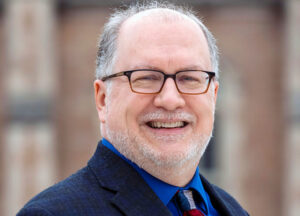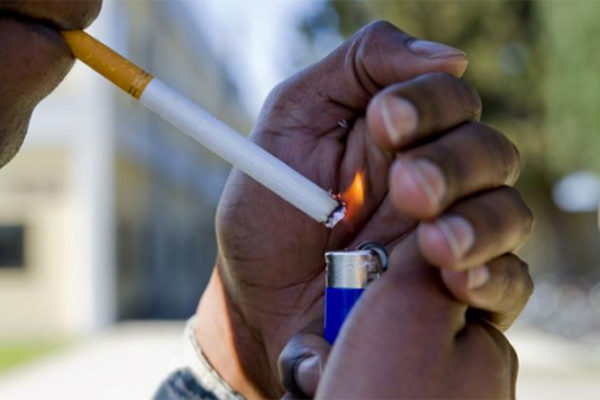Across 30 major U.S. cities, an average of 63% of public schools are located within 1,000 feet — about two city blocks — of a store selling tobacco and e-cigarette products, according to a comprehensive new study mapping tobacco retailers.
The study was conducted by researchers at Stanford University School of Medicine, along with those from Washington University in St. Louis and the University of North Carolina, members of the ASPiRE Center.
Key findings of the study include:
- Tobacco retailers are located near schools. In eight of the cities surveyed, at least 80% of public schools are within 1,000 feet of a tobacco retailer: Baltimore (87%), Boston (87.5%), Miami (90%), New York City (94%), Philadelphia (90%), Providence (80%), San Francisco (81.5%) and Washington, D.C. (82%).
- Tobacco retailers are concentrated in low-income areas. On average, there are nearly five times more tobacco retailers per square mile in the lowest-income neighborhoods than in the highest-income neighborhoods, as defined by data from the U.S. Census.
- Tobacco retailers are ubiquitous. Across the 30 cities, there are 31 times more tobacco retailers than McDonald’s restaurants and 16 times more than Starbucks.
- Tobacco retailers are easy to access. On average, 70% of city residents live within a half mile, or about a 10-minute walk, of a tobacco retailer.
Funded by the National Cancer Institute, the research was conducted by the Advancing Science and Practice in the Retail Environment (ASPiRE) Center, a collaborative that investigates how tobacco retailer density and innovative retail tobacco interventions impact people and communities.
The center launched in 2018 with a five-year $11.6 million grant from the National Cancer Institute at the National Institutes of Health to a partnership made up of Washington University, the University of North Carolina at Chapel Hill and Stanford University.
The center’s goal is to build a strong base of scientific evidence for effective retail policies to reduce tobacco use, tobacco-related disparities and the public health burden of tobacco.
Using a wide range of data from state and local governments and other sources, the researchers mapped retailers that sell cigarettes, e-cigarettes and other tobacco products in 30 large cities across the United States, providing the most comprehensive study to date showing the ubiquity of tobacco retailers and their proximity to schools.

Douglas Luke, professor at Washington University’s Brown School, and his team help to translate, communicate and disseminate evidence from the ASPiRE research projects for tobacco control practitioners. The team translated the findings from this study into user-friendly, tailored fact sheets for the 30 cities. Washington University’s Ross Brownson, the Steven H. and Susan U. Lipstein Distinguished Professor, is co-lead on the dissemination effort.
Luke, who co-leads the Tobacco Town project, is director of the Center for Public Health Systems Science. He is a leading researcher in public health policy, systems science and tobacco control. He directs work focused primarily on the evaluation, dissemination and implementation of evidence-based public health policies.
Approximately 29 million adults and 8 million children (1 in 9 U.S. residents) live in these 30 cities, from Atlanta to Washington, D.C. St. Louis wasn’t included in the study, but Kansas City was.
This study adds to previous research showing that the tobacco industry has targeted low-income and minority neighborhoods. In particular, the industry has long targeted Blacks with marketing for menthol cigarettes, with a wealth of research showing that Black communities have more tobacco retailers and tobacco marketing. Blacks die at higher rates than other groups from tobacco-related diseases such as cancer, heart disease and stroke.
According to the researchers, “Living in neighborhoods with a higher concentration of tobacco retailers makes youth more likely to start using tobacco and makes quitting more difficult. In addition, higher concentrations of tobacco retailers in disadvantaged neighborhoods contribute to health disparities.”
Tobacco use is the leading cause of preventable death in the U.S., resulting in over 480,000 deaths and $170 billion in health care expenses each year.
While the U.S. has greatly reduced cigarette smoking, youth use of e-cigarettes has skyrocketed in recent years. According to the 2019 National Youth Tobacco Survey, e-cigarette use among high school students nationwide more than doubled between 2017 and 2019 (from 11.7% to 27.5%), and over 5.3 million U.S. kids now use e-cigarettes. Research shows that 97% of current youth e-cigarette users tried a flavored product in the past month, and 80% of youth who had ever used tobacco started with a flavored product.



Comments and respectful dialogue are encouraged, but content will be moderated. Please, no personal attacks, obscenity or profanity, selling of commercial products, or endorsements of political candidates or positions. We reserve the right to remove any inappropriate comments. We also cannot address individual medical concerns or provide medical advice in this forum.